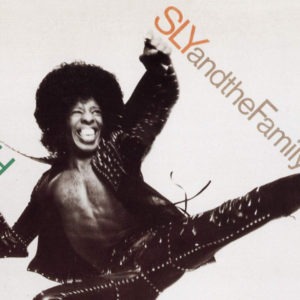Over the past year, businesses have been through tremendous upheaval—the kind that forces leaders to reassess priorities and strategy. Regarding thought leadership, I’ve had a lot of conversations with colleagues, clients, and marketers on what works and how they’ve adapted their content strategy. The challenges of measuring content ROI for B2B marketers remain: the sales cycle is long, the touch points are many, and the factors contributing to a sale can be elusive to pinpoint. But marketers continue to evolve their measurement approach, which is a necessity in the current climate.
One shift has been the introduction of new measurement benchmarks that reflect timeliness and sophistication, in addition to other measures such as traditional web metrics, social media performance, mindshare, CRM activity, and anecdotal evidence. These benchmarks are not unlike the ones I associate with music releases—and there’s a lot to learn from the artists and producers who do this well.
Below, I break down the best metrics based on your content’s intent and what’s to be gained by different approaches.
Short-term relevance (the hit single)

When each day is met with new vaccine data and developments, new applications of artificial intelligence and automation, or supply chains threatened by natural and man-made disruptions, there’s one certainty: that thought leadership piece you just published already feels like something from a time capsule.
When it comes to emphasizing timeliness over staying power, we can look to singles climbing the charts. With so much content flooding the market, some pieces shoot straight to the top to dominate the conversation (or playlists, in this metaphor) for a short time before being overtaken by the next new thing. Of course, many articles (and songs) don’t make the top ten but stall further down the charts, fading before they make any impression. The challenge for organizations that take this approach is to produce a steady string of hits—think Max Martin (or Stax during the late 1960s and early 1970s)—and to move quickly.
For thought leadership that attempts to be of the moment—to be the hit single—the numbers in the first few weeks of publication mean everything. With this strategy, page views, time on page, and other engagement metrics provide the most accurate picture of whether a piece of content hits its mark.
Companies that succeed with this approach have the potential to become go-to resources—say, the record companies known for consistently churning out chart toppers. During the pandemic, organizations that had a string of hits saw their audience double or triple in the early stages of the pandemic and achieved impressive sustained growth. And yes, one of the many challenges with this approach is maintaining a consistently high level of quality and timeliness—but there are ways to do it.
Shelf life (the album)

One colleague from a tech consulting firm said that in June 2020, her company moved beyond using the pandemic as a lens and focused its thought leadership on its core offerings. The company’s experts had always emphasized digital technologies, and the pandemic made those needs an even higher priority.
The shelf life strategy is all about a few themes brought to life by flagship reports, big think pieces, and content packages. Subject-matter experts combine their unique perspective with the commitment to refining their ideas over time. This marquee content is built to last, so it’s where promotional resources are spent.
It’s analogous to a perfectly constructed album. Sure, the album may have some wicked songs, but it’s more than the sum of its parts, and it addresses some universal themes while offering a unique take. We worked on one piece for a client that was published in early 2018 and has remained the top article for three years straight. It’s no Dark Side of the Moon by Pink Floyd (927 weeks on the Billboard top 200 albums) or even 21 by Adele (502 weeks and counting), but it’s respectable. Like those albums, the article combined a few elements: it tackled a compelling topic (the impact of artificial intelligence), articulated a distinctive point of view (an aspirational look at the future of an industry), and took the necessary development time (about three months) to hone their insights and solutions.
Success is measured differently for albums. If the thought leadership piece has a long tail, its performance (as measured by page views, for example) over the full year will likely exceed the most popular piece from a given month. Articles with this kind of staying power can often be an anchor for a campaign, extending its shelf life. And tracking the impact through metrics such as share of voice, citations by other publications, or the ascension of the authors to true thought leaders, complete with attendance on panels and at conferences, highlights the impact. The authors of such a piece are like a group that may never have a top ten hit but play to sold-out houses for years.
Conversation shapers (your big brother’s music)

Anecdotal evidence on thought leadership—the kind that leads to client conversations or engagements—can be powerful. But there’s a better, more codified way. A colleague mentioned that her company follows up with author teams about six weeks after their thought leadership hits the market with a short questionnaire: Did you promote it to your network? Did you send it to clients? Did it lead to conversations or engagements?
Companies that commit to this type of regular follow-up have a much better view on how their thought leadership directly supports business-development efforts. Another colleague noted in a recent conversation that the best content is often narrowcast; if you can reach every CEO at a Fortune 500 company, do you care that you didn’t crack four digits in views? By prioritizing certain audiences and promoting content through certain channels (such as newsletters), companies can ensure their ideas have a greater impact.
Curated distribution of thought leadership, and the follow-up, is the equivalent of getting a music tip from a trusted source. I bet you could name an album a sibling, friend, or acquaintance recommended that ended up transforming your worldview. Based solely on their suggestion—not on reading the trades or listening to critics—you gave it a chance. If you’re like me, you probably quickly wondered how you got by without it.
Companies should absolutely track this activity; it just requires an incremental effort. Yet too few do.
Engagement (more than just the songs)

Companies have increasingly been investing in integrated campaigns around flagship pieces: an article with an accompanying podcast that offers a closer look into the material, interactive modules that enable viewers to explore data by different cuts, or videos and infographics to provide numerous ways into the material. Remember when Beyoncé dropped Lemonade, accompanied by an album-length video? (Similarly, my man Sturgill Simpson released a Japanese anime film with his album Sound & Fury.)
The goal with these efforts is to amplify the most compelling parts of the content, deepen engagement, and strengthen the connection that users have to content. Accordingly, the most useful metrics are time on page and the number of content pieces consumed.
Great presentation can’t compensate for middling ideas, but it can elevate and extend the impact of flagship pieces with something to say.
***
So in summary: Billboard Hot 100, album chart, trusted influencers, and presentation. Depending on your company’s approach to content, these metrics could give you a far better sense of the impact of your thought leadership.




Leave a Reply
You must be logged in to post a comment.